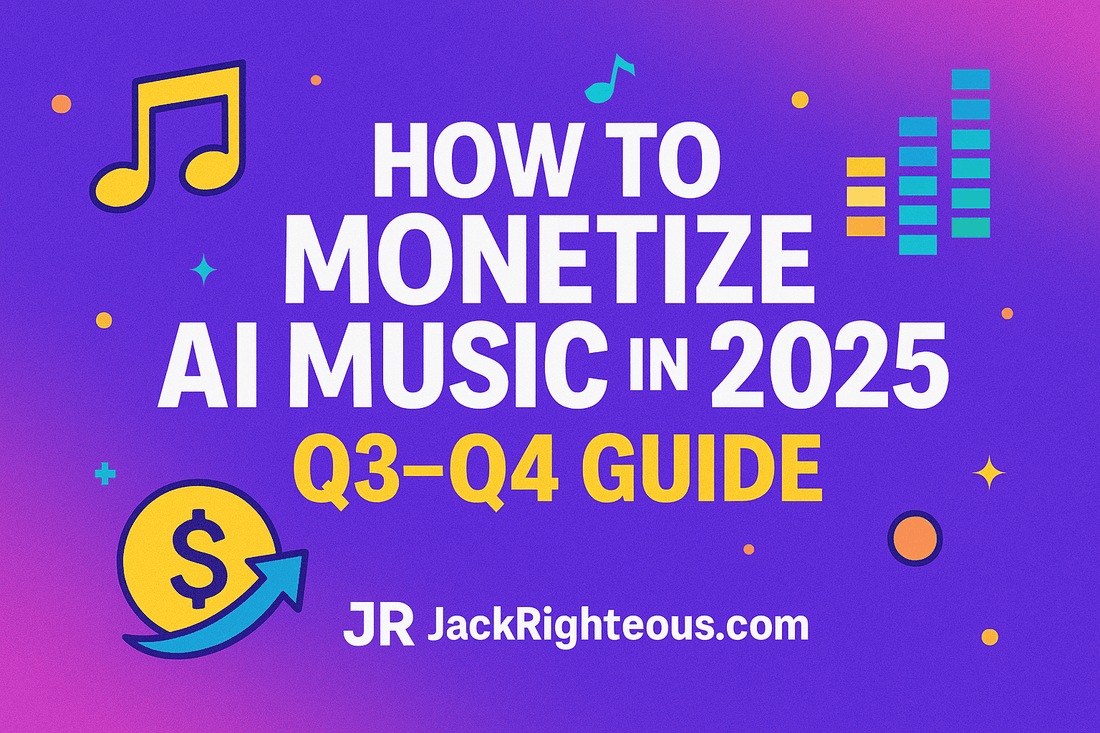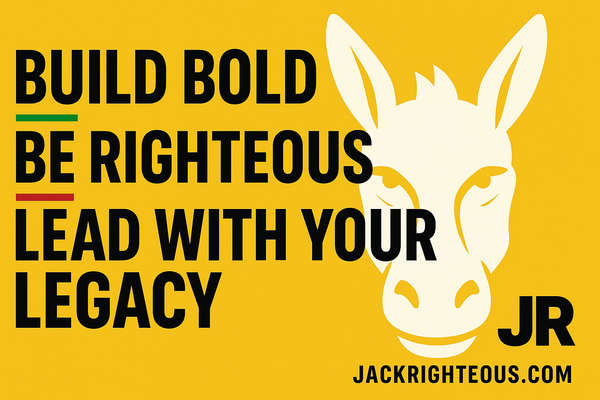
How to Monetize AI Music in 2025 (Q3–Q4 Guide)
Gary Whittaker
How to Monetize AI Music in 2025: Q3 + Q4 Opportunities You Can’t Miss
AI tools like Suno and BandLab have changed how we create music. Turning tracks into income still requires a plan. Below is a ranked breakdown of monetization paths from lower to higher earning potential, plus a seasonal playbook for Q3–Q4 when demand peaks.
Why Monetizing AI Music Is Different in 2025
Streams pay little. Sync is powerful but cautious about AI-only tracks. The most reliable income now comes from using music as part of a broader system: audience growth, services, digital products, and partnerships. As we head into Q3 and Q4, creators who plan and release intentionally can capture outsized attention and revenue.
Ranked: Monetization Paths for AI Musicians
1) Streaming Platforms (Lowest Income)
Spotify, Apple Music, YouTube Music validate your existence but pay pennies per stream. Use streaming for credibility and discovery, not your primary income source. Time singles around seasonal moments to boost reach.
2) Tips, Donations, and Crowdfunding
Ko‑fi, Buy Me a Coffee, Bandcamp tips, or small Patreon tiers generate modest but meaningful support. Works best when you share the story behind the music and deliver consistently.
3) Micro‑Content and Background Music
TikTok, Reels, and Shorts reward loops, hooks, and moods. Monetization is indirect through ad revenue, sponsorships, and traffic to your own offers. Seasonal audio trends in Q4 can multiply reach.
4) Custom Commissions (Direct‑to‑Creator Work)
Podcasters, YouTubers, coaches, churches, and small businesses need intros, themes, and event anthems. AI shortens production time; your value is in creative direction and fit. Typical ranges: roughly $50–$500 per project for indies, higher for brands.
5) Digital Products and Templates
Prompt packs, remix kits, stems, workflow guides, and content bundles scale beyond one‑off work. Seasonal products perform well during holiday traffic if marketed weekly and tied to use cases.
6) Sync Licensing (High Income, AI‑Only Restricted)
Sync can pay $100–$10,000+ per placement, but most major libraries and marketplaces do not accept AI‑only tracks. Use AI for drafting ideas, then finalize with human vocals, instrumentation, or mixing to meet licensing standards. Alternatively, pitch directly to indie creators who accept AI–human hybrids with disclosure. Prepare campaign‑ready tracks by October to target Q4 demand.
7) Building a Brand and System (Highest Ceiling)
The durable money comes from systems: singles attract attention, then you monetize via services, toolkits, courses, coaching, events, merch, or partnerships. Music is the hook; the ecosystem is the business. Align releases with seasonal moments to expand reach and conversion.
The Q3–Q4 Advantage
- Q3 (Back‑to‑School): new podcasts, shows, and channels need intros and themes.
- Q4 (Holidays): brands, churches, nonprofits, and creators increase budgets for campaign‑ready music.
- Singles travel faster: focus on timely tracks for Halloween, Black Friday/Cyber Monday, Christmas, and New Year’s.
The Marketing Reality You Can’t Skip
Many musicians dislike marketing, especially criticism. But without marketing, your best songs will not reach the right ears. If quick cash is your only goal, there are easier paths than AI music.
Stay focused on what matters to your brand. You do not need albums. Prioritize singles that communicate your intentions in the musical language your audience already loves. AI accelerates drafts; identity and human direction take time.
Q3–Q4 Action Checklist
- Plan two seasonal singles (Halloween and Christmas/New Year’s).
- Offer a clear commission menu with delivery times and prices.
- Package one seasonal digital product (prompt pack, ad beds, worship/gospel set, sports hype pack).
- Prepare one human‑finalized track appropriate for local sync (churches, schools, nonprofits, indie games).
- Publish weekly: a snippet, the story behind it, and a specific call‑to‑action.
